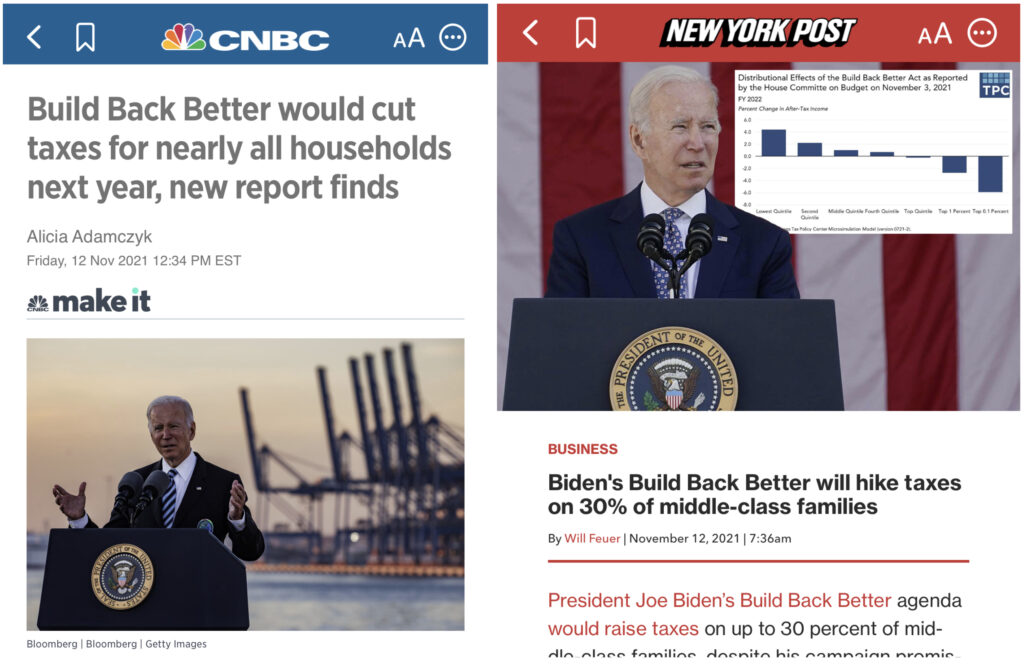Or am I missing something super obvious here? Take a look for yourself: CNBC; New York Post. The funny thing: Both news stories cite the same study but choose to frame the findings differently. Specifically, in presenting their opposing viewpoints, CNBC and New York Post link to different Tax Policy Center datasets—here and here, respectively.
The two headlines, and the reports themselves, are an excellent case study for how data is subjectively presented by the so-called mainstream media—or any other organization with some measure of partisan political leanings. The network is notoriously liberal and pro-Biden. The newspaper is arguably conservative and more critical of old Joe.
Duck!
There is a whole lot of data flying about. You got to duck often not to be hit and knocked unconscious. For example, the politicization of SARS-CoV-2 (severe acute respiratory syndrome Coronavirus 2)/COVID-19 is analogous to softball-size hail flinging from a tornado. You will get a concussion from misrepresented or manipulated data and in the following daze become confused enough to believe what’s presented. Misinformation about Novel Coronavirus is everywhere—as much in the mainstream as new media or social networks (So there is no misunderstanding: I refer to an endemic misinformation crisis of which the viral pandemic is but a small part).
As a journalist, I know what to look for and how to duck. In 2021, if you accept one-percent of data presented—and interpreted by talking heads or opinion columnists—on almost any airwave or online venue, you’ve gone too far. Assume agendas all, because partisanship is such a shit-storm right now. If you’ve got a storm cellar, run and hide from the pundits—who, incidentally, are as arrogant as Greek Gods flashing lightning and flinging hail-balls to the Earth. Mighty they are not but pretend to be.
Who’s Right?
Referring back to this post’s title, both can be wrong. Are they? Read the two stories. Look at their data sources. And you tell me.
